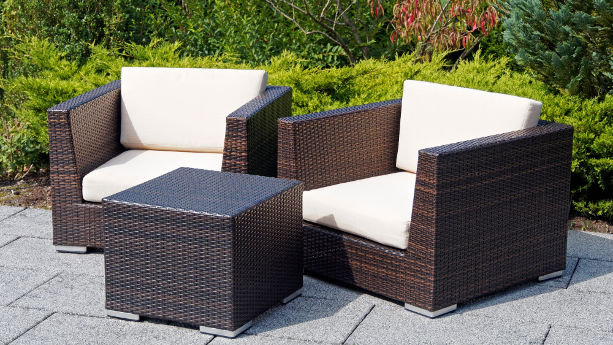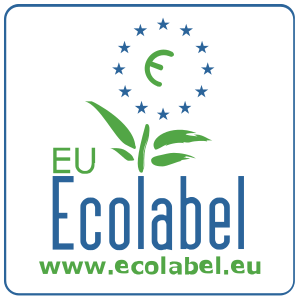
The EU ecolabel is a voluntary marking scheme used to signal that a product meet certain environmental standards. In order to use the EU Ecolabel, it is mandatory to comply with the requirements outlined under the EU Ecolabel Regulation.
That being said, the specific requirements differ depending on the product type, which is further explored in this guide.
In this guide, we explain what the EU Ecolabel is, what product groups it covers, and its various criteria. We also explain how you can apply for the EU Ecolabel.
Content Overview

FREE CONSULTATION CALL (US, EU & UK)
- Request a free 30-minute call with Ivan Malloci to learn how we can help you with:
- Find product requirements
- Certification and labeling
- Lab testing
What is an EU Ecolabel?

The EU Ecolabel was established in 1992 by the European Commission, as a voluntary environmental performance scheme. It indicates that the labelled products meet high environmental standards throughout their life cycle.
The EU sets out product criteria to encourage eco-friendly best practices and lower the environmental impact of raw material extraction, production, distribution, and disposal. Your product must meet the relevant requirements to get awarded the label.
How can a brand benefit from the EU ecolabel?
The EU Ecolabel can bring a competitive advantage to your company, as it serves as a reliable and verifiable way of letting your customers know that your products are environmentally sustainable.
Also, if you want to sell your product to government entities through public procurement, you may soon need to comply with EU Ecolabel requirements, as public agencies are facing more and more pressure to only source products that bear the EU Ecolabel.
Note that the process through which public authorities seek to procure goods with a reduced environmental impact is called Green Public Procurement (GPP), but as far as we know, at the moment, it is voluntary.
EU Ecolabel Product Groups
The requirements of the EU Ecolabel Regulation apply to various product categories, such as textiles, electronics, and furniture.
Textiles and footwear
The regulation aims to reduce pollution in the manufacturing processes of such products and lessen the usage of hazardous substances in textiles and footwear. Covered products include:
- Upholstery fabric
- Textile clothing
- Knitted panels
- Socks
- Leather shoes
- Soles
Furniture and mattresses
The EU Ecolabel regulation covers furniture and mattresses in order to reduce the environmental impact on forests and pollution.
Here are a few covered products:
- Bed frames
- Headboards
- Bed legs
- Mattresses for existing bed structures
- Mattresses for indoor-use free-standing structures
Recommended reading
- Furniture Regulations in the European Union: A Complete Guide
- Mattress Regulations in the European Union: An Overview
Personal and animal care products
The EU Ecolabel regulation applies to personal and animal care products and aims at ensuring that those products are safe and have a lessened impact on the environment.
Here are some examples of covered products:
- Baby diapers
- Liquid shampoo
- Toothpaste
- Conditioners for animals
- Reusable menstrual cup
Coverings
The EU Ecolabel applies to hard covering products and floor coverings made of wood, cork, or bamboo. It generally aims to ensure compliance with emission requirements and a reduction of impact from raw material quarrying.
The regulation covers products such as:
- Floor tiles
- Floor slab
- Floor paver product
- Wood floorings
- Cork floorings
- Bamboo floorings
Paper products
EU Ecolabel-certified paper products use energy-efficient manufacturing processes to reduce their impact on water, air, and forests.
Products covered include:
- Unprinted blank paper
- Coloured board
- Plain printing paper
- Envelopes
- Wrapping paper
- Paper filing stationery products
Televisions and displays
Electronic displays are subject to the EU Ecolabel requirements. In this case, the regulation aims at ensuring that such products are energy efficient, repairable, and contain limited hazardous substances. It also requires products to be recyclable and recoverable.
Here are some examples of covered products:
- Computer monitors
- Televisions
- Tuners
- Receivers
Cleaning products
The EU Ecolabel applies to domestic and industrial cleaning products, including substance restrictions, sustainable sourcing, recyclability, and instructions for use.
Examples of covered cleaning products include:
- Dishwasher detergents
- Hand dishwashing detergents
- Hard surface cleaning products
- Industrial dishwasher detergents
- Laundry detergents
Other products
The EU Ecolabel also covers the following product groups:
- Do-it-yourself products (e.g. paints and varnishes)
- Gardening products (e.g. soil improvers)
- Lubricants (e.g. chainsaw oils)
EU Ecolabel Criteria
Importers and manufacturers of products covered by the EU Ecolabel Regulation must ensure that they comply with the relevant criteria in order to affix the EU Ecolabel to their products.
Here is a table listing products and product groups, as well as examples of criteria from each product group.
| Product Group | Decisions | Criteria (examples) |
| Textiles and footwear | Commission Decision (EU) 2014/350 (Textiles) Commission Decision (EU) 2016/1349 (Footwear) |
a. The cotton content of t-shirts must contain at least 95% organic cotton.
b. Cotton used in textile products should not contain DDT. c. Raw hides used in socks for children under three years of age must be processed using chromium-free tanning technology. |
| Furniture and mattresses | Commission Decision (EU) 2016/1332 (Furniture)
Commission Decision 2014/391/EU (Mattresses) |
a. Furniture products and their components should not contain any Substances of Very High Concern (SVHC) in concentrations exceeding 0.1%.
b. Furniture products should not contain plastic foils made using vinyl chloride monomer (VCM). c. The surface of springs should not be covered with a layer of galvanic metal. |
| Personal and animal care products | Commission Decision (EU) 2021/1870 (Cosmetics)
Commission Decision (EU) 2021/1870 (Animal care products) |
a. Pulp used in the personal care product should not be bleached with elemental chlorine gas.
b. The maximum allowable amount of bisphenol A in reusable menstrual cups should not exceed 0.02% . c. The critical dilution volume (CDV) toxicity of the animal care product should not exceed 12,000 l/g AC. |
| Coverings | Commission Decision (EU) 2021/476 (Hard covering) Commission Decision (EU) 2017/176 (Wood, cork, and bamboo-based floor coverings) |
a. Wood-based materials should not originate from genetically modified organisms (GMO).
b. The limit value for mercury as a contaminant in recycled bamboo used in manufacturing the final product is 25 mg/kg. c. Cork floor coverings should not be treated with biocidal products. |
| Paper products | There are three different decisions, according to the product type | a. Rotogravure printing processes must have a minimum toluene recovery efficiency of 97%.
b. The final tissue product, if it contains recycled fibre, should not contain more than 1 mg/dm2 of formaldehyde per EN 1541. c. The amount of waste paper bags should not exceed 11% at carrier bag production sites. |
| Televisions and displays | Commission decision (EU) 2020/1804 | a. The maximum on mode power demand in normal configuration for digital signage displays should not exceed 125 W.
b. LCD display unit glass and screen cover glass should not use arsenic or its compounds in excess of 0.005% in the manufacturing process. c. The product must come with freely available disassembly and repair instructions. |
| Cleaning products | There are seven different decisions, according to the product type | a. The dosage of single-function dishwasher detergents should not exceed 19g/wash.
b. The total phosphorus content in ready-to-use (RTU) kitchen cleaners should not exceed 1 g/l of the RTU product. c. Laundry detergents should not contain microplastics regardless of concentration. |
How to apply for the EU Ecolabel
In this section, we summarize the EU Ecolabel application process.
1. Select product group and Competent Body
First of all, you need to confirm to what product group your products belong, in order to make sure that you apply for the EU Ecolabel.
Then, you need to select a Competent body. Choosing a Competent Body is an essential step of the EU Ecolabel registration procedure. They are responsible for managing the EU Ecolabel applications and licenses at the national level including declarations, datasheets, and test results.
You should contact a competent body in one of the countries where you intend to market your product, in order to start the application.
Here are some examples of Competent Bodies:
- National Focal Point (Spain)
- ADEME (France)
- RAL gGmbH (Germany)
- National Standards Authority of Ireland (NSAI) (Ireland)
2. Application and registration
Although your Competent Body can provide guidance on the documents necessary to complete your application, license applicants are still responsible for registering their products on the online EU Ecolabel product and service catalogue (ECAT).
License applicants should set up an account on the ECAT. Once they have set up the account, they can manage the existing licenses or apply for a new product license.
Also, applicants can find the following information on the system:
- Registration status
- License Number
- Product Group
- Competent Body
- Company information
3. Testing and submission
License applicants should appoint a third-party lab to perform the tests to assess compliance with the relevant product criteria. They should submit the test results and other relevant documents to their Competent Body and request verification.
4. Application approval
Your Competent Body should examine and verify all documents and provide feedback within two months. Once it approves your application, the Competent Body should issue a contract that includes information such as:
- Range of covered products
- Trade names
- License holder’s internal reference numbers
- Manufacturing sites
- EU Ecolabel registration number
You can find the standard contract format in Annex IV to the EU Ecolabel Regulation.
5. Displaying the EU Ecolabel Logo
In order to display the EU Ecolabel Logo on your products, the EU recommends license holders to ask the EU Ecolabel Helpdesk for high-resolution files of the label, and then affix it on their product and packaging, respecting the EU Ecolabel logo guidelines.
License holders should make the logo and license number visible on related promotional materials and product packaging. The Ecolabel can also be used on the company website or social media.
FAQ
Is the EU ecolabel mandatory or voluntary?
According to Article 1 of the EU Ecolabel Regulation, the scheme is voluntary.
Where should the EU Ecolabel be placed?
Per the EU Ecolabel Logo Guidelines, the logo and the license number text box must be present on the product’s packaging or marketing material. The label must be clearly visible no matter the packaging type.
If possible, the information should also be affixed to the product (e.g. sewn on a textile product as a tag)
How much does it cost to apply for the EU Ecolabel?
The cost of the EU Ecolabel mainly depends on the country where you apply, but should generally be between 200 and 2,000 Euro. You can visit the Competent Body EU Ecolabel Fees page to obtain a cost estimation.
In general, the cost includes the standard fee, extension fee, and annual fee. You will need to pay a standard fee to start the process, an annual fee each year, and an extension fee when the license expires (every 3 to 5 years). Below you find some examples.
Germany
- Standard fee: 1,200 Euro
- Extension fee: 600 Euro
- Annual fee: 0.15% of annual turnover in the EU (Min. 300 Euro and Max. 25,000 Euro)
France
- Standard fee: 1,215 Euro
- Extension fee: 920 Euro
- Annual fee: 200 Euro
Italy
- Standard fee: 1,200 Euro
- Extension fee: 100 Euro
- Annual Fee: 0.15% of turnover in the EU
Sweden
- Standard fee: 2,000 Euro
- Extension fee: 125 Euro per hour (Max. 2,000 Euro)
- Annual fee: 0.15% of annual turnover in the EU (Min. 1,500 Euro and Max. 25,000 Euro)
Note that there is a discount available for the following types of companies:
- Micro enterprises and SMEs
- Companies from developing countries
- EMAS or ISO 14001 certified companies
What if I cannot find any applicable product group for my product?
You can only apply for the EU Ecolabel if your product is listed under one of the product groups. However, you might consider submitting a new product proposal or contacting the EU Ecolabel helpdesk for assistance.
Where should the EU Ecolabel be printed?
Both the EU Ecolabel logo and license number text box should appear on the product, packaging, or other marketing material. The label should be visible and legible and should not be smaller than 10.6 x 10.6 mm.
Which companies offer EU Ecolabel services?
If you want your products to be awarded the EU Ecolabel, you need to get approval from a Competent Body, that is, an independent third party such as ADEME in France or RAL gGmbH in Germany.
The Competent Body will assess your application and approve it, as long as you comply with the criteria.
In particular, the Competent Bodies must ensure that the verification process, such as testing according to relevant standards, is performed by an independent party.
Although on the EU website, we could not find a definition of “independent party”, this could for example be a lab testing company that offers services related to the EU Ecolabel, such as:
- SGS
- TÜV Rheinland
- Intertek
Do I need to renew the EU Ecolabel?
The European Commission reviews, and may revise, the criteria before they expire, and may even prolong the validity of those criteria.
License holders do not need to renew the EU Ecolabel unless the criteria for the relevant product group are revised. Note that the criteria are usually updated every 3 to 5 years.
The EU Ecolabel contract between the license holder and the competent body automatically renews if the validity of one or more criteria – valid for a product – is prolonged.
Can a non-EU company apply for the EU Ecolabel?
Non-EU companies are also eligible to apply for an EU Ecolabel if their products are distributed in the EU. They can either contact the Competent Body in the country where the products are manufactured (if it is inside the EU), or where the product will be sold if it’s manufactured outside the EU.
For example, if the manufacturer is located in China, and is planning to sell its products in France, it should contact the Competent Body in France.




















